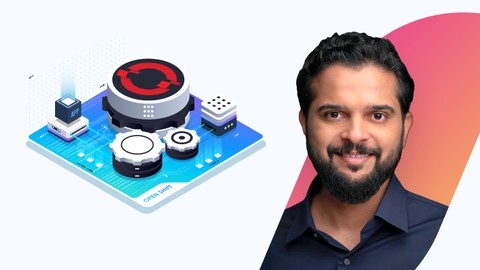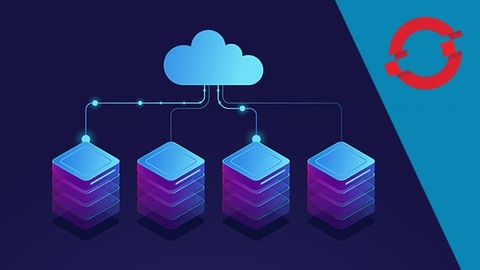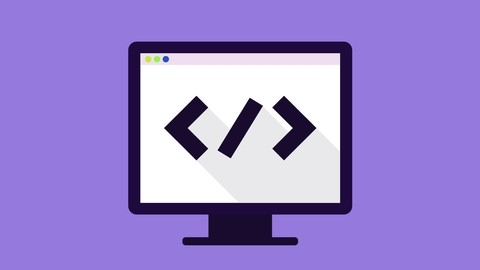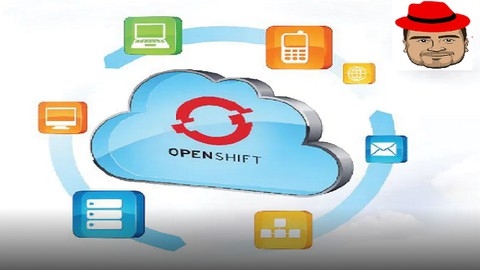OpenShift is a powerful, open-source container application platform built on top of Kubernetes.
It streamlines the process of building, deploying, and managing applications, allowing developers to focus on innovation rather than infrastructure.
Learning OpenShift can significantly boost your career in DevOps and cloud-native development, opening doors to exciting opportunities in a rapidly growing field.
By mastering OpenShift, you’ll be equipped to manage containerized applications efficiently, automate deployments, and contribute to building scalable and resilient systems.
However, with the abundance of online courses available, finding a high-quality OpenShift course on Udemy that caters to your specific needs and learning style can feel like searching for a needle in a haystack.
You need a course that not only covers the theoretical foundations but also provides hands-on experience and real-world examples to solidify your understanding.
You’re likely looking for a comprehensive learning experience that will equip you with the skills and confidence to tackle real-world OpenShift challenges.
Based on our extensive research and analysis, we believe the OpenShift for the Absolute Beginners - Hands-on course is the best overall option on Udemy.
This course provides a solid foundation in OpenShift, starting with the basics of Docker and Kubernetes, and progressing to hands-on exercises in deploying and managing applications.
Its practical approach, combined with clear explanations and engaging examples, makes it an excellent choice for those starting their OpenShift journey.
While this is our top recommendation, there are several other excellent OpenShift courses available on Udemy, each with its own strengths and focus areas.
Whether you’re a beginner or an experienced developer looking to expand your skillset, keep reading to discover the perfect course to help you master OpenShift and unlock its full potential.
OpenShift for the Absolute Beginners - Hands-on
This “OpenShift for the Absolute Beginners - Hands-on” course is a solid choice if you’re starting your journey with Openshift.
You’ll begin by building a foundation with Docker and Kubernetes, the essential components powering Openshift.
The course then guides you through setting up Openshift, using familiar tools like Minishift and VirtualBox, providing hands-on experience from the get-go.
You’ll delve into core concepts such as projects, users, builds, deployments, and scaling.
You’ll gain confidence by deploying a real application, the example voting application, and explore networking, services, routes, and storage.
The course even covers templates and catalogs, enabling you to create your own custom applications.
Beyond the core material, you’ll benefit from additional resources like appendices covering GitLab, CI/CD, and YAML.
This course is a direct route to mastering Openshift fundamentals.
Practical OpenShift for Developers - OpenShift 4
You’ll start by getting your hands dirty with Docker, learning the fundamentals of containers and how to build and manage container images.
You’ll quickly transition to OpenShift, where you’ll set up your development environment and master the “oc” command-line tool, your primary weapon for interacting with the platform.You’ll learn to create and manage projects, users, and pods, the fundamental building blocks of your OpenShift applications.
You’ll master DeploymentConfigs for managing application deployments, understand how to expose your applications through Services and Routes, and use YAML to define your configurations.
You’ll gain proficiency in creating and managing ConfigMaps and Secrets, ensuring the secure storage of your application configurations and sensitive data.
The course then leads you into the world of images and ImageStreams, exploring how they are used to build and manage your applications.
You’ll master the art of building applications with Builds and BuildConfigs and learn the intricacies of Source-to-Image (S2I), a powerful technique for streamlined application development.
You’ll discover how to leverage volumes for efficient storage management and explore the advanced features of DeploymentConfigs, including triggers, deployment strategies, and hooks.
The course teaches you how to scale your applications with HorizontalPodAutoscalers, automatically adjusting the number of running pods based on resource usage.
Finally, you’ll learn about templates, which offer a powerful way to manage and reuse application configurations.
Ultimate Openshift (2021) Bootcamp by School of Devops®
If you’re looking to master Openshift, this course offers a comprehensive and practical approach to the technology.
It dives straight into the heart of Openshift v4.6, equipping you with the skills to deploy web applications that boast high availability (HA).
The course guides you through setting up your development environment with either Minishift or Docker, ensuring you’re ready to tackle real-world deployments.
You’ll learn to deploy PHP applications from Git and gain a deep understanding of the underlying processes involved.
Openshift’s handling of builds, deployments, and publishing becomes clear, laying the groundwork for more advanced development tasks.
Beyond the basics, you’ll delve into crucial concepts like Projects, Pods, Services, Routes, Build and Deployment Configs.
The course also includes a dedicated section on Docker fundamentals, ensuring you have a solid grasp of containerization.
You’ll learn how to create projects, write pod specifications, achieve high availability with Replication Controllers, and expose applications through Services and Routes.
The course doesn’t shy away from more advanced concepts, like deploying applications using images, templates, and Dockerfiles.
You’ll explore the power of S2I builders, Build Configs, and gain proficiency in launching applications using source strategy.
The course culminates with a practical approach to deploying a Redis database and integrating it with a frontend application.
You’ll walk away with the knowledge and skills to tackle real-world Openshift challenges.
Red Hat OpenShift With Jenkins: DevOps For Beginners
This course guides you through the world of DevOps, starting with the fundamentals of the Software Development Life Cycle (SDLC) and the streamlined approach DevOps offers.
You’ll gain a solid grasp of crucial concepts like containers and the power of Kubernetes for managing them.
You’ll then explore Red Hat OpenShift, a powerful platform for building and deploying applications, and how it differs from Google Cloud Platform.
You’ll dive straight into hands-on experience with OpenShift, setting up your very first PHP project.
You’ll learn to manage your project’s health, scale it up or down, and even deploy a Django Python application.
You’ll also get familiar with the OpenShift command line tools (CLI), giving you direct control of OpenShift from your terminal.
The course then shifts focus to Jenkins, a popular tool for creating automated continuous integration pipelines.
You’ll learn how to set up Jenkins on your own Ubuntu machine, install essential plugins, and build your first Jenkins job.
You’ll also discover how to utilize Git, a powerful version control system, to manage your code, and even build projects directly from a Git repository using Jenkins.
You’ll also learn how to create SSH keys for secure communication.
For example, you’ll learn how to configure a Jenkins pipeline to automatically build and deploy your PHP application whenever you push changes to your Git repository.
This ensures consistent and efficient deployments, a cornerstone of modern DevOps practices.
This course provides a practical learning experience with real-world tools like Docker, Git, Jenkins, and Red Hat OpenShift, equipping you with valuable skills applicable to your own projects.
OpenShift 4 and Azure Red Hat OpenShift (ARO) Made Easy
This comprehensive course offers a structured path to mastering OpenShift and Azure Red Hat OpenShift (ARO).
You’ll begin by gaining a firm understanding of containers, contrasting them with virtual machines.
The course then introduces you to the essential tools of the trade: Docker, Dockerfile, and Docker Hub.
You’ll even get hands-on experience creating a containerized web app and pushing it to Docker Hub, solidifying your understanding of these technologies.
The curriculum delves into the heart of OpenShift, explaining Kubernetes and its role in the OpenShift ecosystem.
You’ll explore OpenShift’s architecture, its key components, and the powerful concept of operators.
The focus then shifts to Azure Red Hat OpenShift (ARO), where you’ll learn about its features, benefits, and pricing structure.
The course clearly outlines the differences between ARO and AKS, providing valuable insights for those working within the Azure environment.
You’ll even pick up a useful tip about VS Code, a popular development tool.
From here, you’ll embark on a journey of creating an ARO cluster, understanding the necessary prerequisites such as resource groups, virtual networks, subnets, and service principals.
The course also covers Red Hat pull secrets and demonstrates how to connect to your ARO cluster using the oc CLI and the OpenShift console.
The course then dives into the core functionalities of OpenShift, guiding you through commands and resources, projects, container registries, and image streams.
You’ll gain proficiency in working with routes, exposing applications, and configuring custom domains using Azure Public DNS.
The curriculum even covers identity providers in ARO, including htpasswd and Microsoft Entra authentication, and teaches you how to integrate ARO with Azure Container Registry (ACR) for seamless container image management.
The course doesn’t stop at the basics.
You’ll explore advanced concepts like scaling in ARO, mastering node resource allocation, manual scaling, and how to implement Cluster Autoscaler and Horizontal Pod Autoscaler (HPA).
You’ll also delve into the nuances of networking in ARO, including Open Virtual Network (OVN) Kubernetes, DNS, public and private ARO clusters, egress lockdown, and network policies.
The course equips you to navigate the intricacies of security, governance, and identities in ARO, covering Azure Key Vault integration, Kubernetes policy implementation with Azure Policy, and manual cluster certificate updates.
Storage options are also explored in detail, including dynamically and statically provisioning Azure Disk and Azure File.
The course concludes with a comprehensive exploration of troubleshooting and monitoring ARO, covering activity logs, Azure status, and enabling Azure Monitor with Container Insights.
You’ll learn about metrics explorer, workbooks, logs, and how to create alerts.
The final section focuses on OpenShift versions and ARO cluster updates, teaching you how to perform version upgrades.
Openshift Comprehensive ++ Dev/Ops: Live Hands-on Katakoda
You’ll gain a solid grasp of Openshift’s fundamentals, from understanding its core concepts and comparing it to other container orchestrators like Kubernetes, to configuring the “oc” client and deciphering the “kubeconfig” file.
The true strength of this course lies in its hands-on approach through Katakoda labs.
You’ll be actively working with Openshift, learning to create and manage users, implement role-based access control (RBAC), and navigate namespaces and pods.
You’ll also delve into the workings of various Openshift components, like etcd, APIServer, scheduler, kubelet, and kubeproxy, gaining a clear picture of how they all interrelate.
As you progress, you’ll tackle advanced concepts like storage, utilizing persistent volumes (PV) and persistent volume claims (PVC) to manage your data effectively.
You’ll also dive into building applications within Openshift, exploring different deployment strategies such as rolling updates and recreating deployments for seamless updates.
The course seamlessly integrates CI/CD principles, using Openshift pipelines and Tekton to automate your development workflow.
You’ll master the art of integrating with GitHub for code management and practice deploying and scaling your applications.
Red Hat Openshift 4 on Bare Metal
This course offers a deep dive into the world of OpenShift 4, teaching you how to deploy and manage it on bare metal.
You’ll start with the foundational principles of OpenShift architecture, gaining a clear understanding of how the various components work together.
The real learning begins when you jump into setting up your own OpenShift cluster on a KVM infrastructure.
You’ll master configuring crucial services like DNS, DHCP, and NFS, which are the backbone of a robust OpenShift environment.
You’ll also learn how to craft ignition files, which act as blueprints for your cluster’s initial setup.
The course goes beyond theory, guiding you through the creation of Bootstrap, Masters, and Worker VMs, the core building blocks of your OpenShift cluster.
This hands-on experience lets you build a working cluster from the ground up, solidifying your understanding of the intricate workings of OpenShift.
You’ll also delve into OpenShift’s powerful security features, like RBAC and SCC.
These tools allow you to fine-tune user permissions and application access, ensuring a secure and controlled OpenShift environment.
The course even explores storage management, teaching you how to configure NFS Storage Classes for persistent data storage within your cluster.
Finally, you’ll learn best practices for monitoring and maintaining a healthy OpenShift cluster, ensuring its long-term stability.
Openshift 4 from scratch
This comprehensive course takes a structured approach, guiding you from the basics to a solid understanding of Openshift’s inner workings.
The curriculum starts by introducing you to Openshift and its various distributions, including Red Hat Openshift and OKD.
You’ll delve into Openshift’s architecture, laying the groundwork for understanding how the platform operates.
To get your hands dirty, the course leverages both Red Hat Developer Sandbox and CodeReady Containers (CRC), allowing you to work with Openshift 4 locally on both Windows and Linux systems.
This course prioritizes hands-on learning.
You’ll master the essential “oc” command-line tool, creating and managing resources within your Openshift cluster with confidence.
You’ll also become proficient in navigating the Openshift WEB console, effectively managing projects and interacting with the platform’s interface.
Beyond the fundamentals, the course dives into the heart of Openshift application development, exploring key concepts like Routes, DeploymentConfigs, and ImageStreams.
You’ll learn to deploy applications from images and source code, mastering strategies for building from source, including GIT repositories and Dockerfiles.
Practical examples, such as deploying OpenERP (Odoo) with Postgres, will solidify your understanding of managing applications and configurations through variables, ConfigMaps, and Secrets.
The course then moves into advanced territory, covering Storage, where you’ll learn to manage storage within your applications using Persistent Volumes (PV) and Persistent Volume Claims (PVC).
Finally, you’ll be introduced to Operators and the Kubernetes Operator Hub, equipping you to install and manage complex applications within your Openshift environment.








